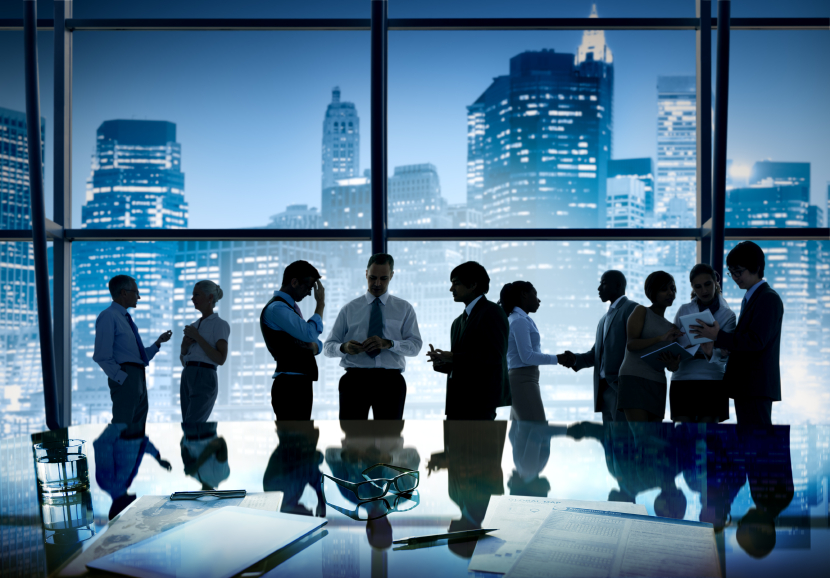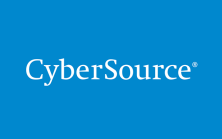Security - Commercial Office

June 14, 2014 - PSPA Editorial Staff
The terminology “Commercial Office” for the purposes of this writing includes a variety of facilities including, but not limited to: high-rise office towers, low-rise office buildings, single story business plazas, in addition to specialty structures serving countless types of business enterprises.
In the commercial office environment, office space is generally owned or leased. The purpose of the space is to support its occupants in performing their job. There are varying types of work space, each supporting different activities. In addition to individual offices and cubicles, there can be meeting rooms, lounges, and spaces for support activities. Some offices have a kitchen area, child care center, and medial/first aid station to name just a few. There are many different ways of configuring office space based upon form, function, safety, security, personal preference, and company culture. While offices are designed to meet the need of varying businesses, the primary use of space is dedicated to the occupant’s day-to-day needs and the needs of invited visitors and guests.
A supplemental component of the commercial office environment includes parking structures, garages, and/or surface lots for the accommodating of automobiles, motorcycles, and bicycles.
With this said, owners, managers and caretakers of commercial office space invest considerable time and money to ensure: (1.) a professional image is maintained, (2.) amenities are provided to ensure occupant comfort and convenience, and (3.) provide security, and life safety measures to eliminate if not reduce risk and general liability. To this end, the use of professionally trained management, engineering, maintenance, and security (people and technologies) are deployed to fulfill the requirements of facility occupants, laws and codes as well as tenant contractual agreements.
Security Considerations
The importance of security in the commercial office environment can be determined through a number of factors including but not limited to facility location, type of occupants, and general as well as specific risk of liability. There are many responsibilities in the effective managing of a commercial office facility and the increasing crime rate adds another responsibility, which includes providing security to occupants, their belongings, and the equipment and supplies of the business.
Today, certain types of facilities and office environments have become magnets for personal attack, vandalism, thefts, and burglaries. Large office facilities and individual tenant spaces are increasingly targeted for break-ins due to the vast number of occupants and valuables. Conversely, in smaller office facilities criminals often assume the establishment is not secure or protected, and assume it will be easier to “hit and run” without tripping alarms or encountering security personnel.
Basic Office Security
There are basically two ways to provide protection for any facility or business and that is (1.) with technology (alarm systems, cameras, etc.,) and (2.) with the use of security practitioners who literally “stand guard” over the premises. Considering these two options, a vast array of options exists to incorporate one or both services. Again, the decision will largely depend on the location of the facility, size and type of facility, people and property utilizing the facility, safety and security needs and financial budget. With that said:
(1.) Do employees, visitors and guests need to be greeted or escorted upon arrival and or exit? If so, technology and/or on-site security personnel may be necessary.
(2.) Do employees, visitors and guests who work varying shifts have to transverse through dangerous or dark areas to get to their automobile or transit station? If so, technology and/or on-site security personnel may be necessary.
(3.) Depending on the area and location of the facility, the occupant’s vehicles may also need to be guarded, or kept in a secured parking lot to prevent vandalism and/or theft.
Owners, managers, and caretakers can be held responsible if employees, visitors or guests suffer loss by theft while they are on site. Worse yet, for an individual to be mugged or injured in an attack in the facility or in the parking lot.
At the very least, if a business cannot afford to hire on-site security personnel, low cost technology should be incorporated and fundamental steps should be taken to ensure: (1.) accountability of occupants ingress and egress (2.) no-one works alone at night, especially female employees, (3.) facility and parking lots are maintained and well lighted, and (4.) indoor as well as outdoor landscaping is kept manicured, to help eliminate staging areas for criminal activity.
With today’s advancements in security technology, any business can provide fundamental security measures to protect people and property. Perhaps in the case of a small business, equipment such as card-reading turnstiles, metal detectors, and X-ray machines may not be practical; however, countless other less-expensive options exist.
Fundamental Security Systems
- A monitored alarm system will contact a call center if the alarm is triggered, and the call center will then contact the police. There is a drawback to this system since it depends on outside phone lines which can be cut before the perpetrator breaks into the facility. Even if that does not happen, and the call center contacts police quickly, there will be time for items to be removed, or damage done before the police arrives.
- An unmonitored system sets off an alarm inside and outside when it is triggered, and can come complete with flashing or steady floodlights to call even more attention to the situation. This usually would have the advantage of scaring off the burglars before much damage could be done, or loss could occur. This system has the added advantage of not incurring fees for monitoring.
- A wireless alarm system can be purchased at a hardware store, and is easy to install. It operates with cameras, sensors and motion detectors, and can also have an alarm and flashing lights included. This system is relatively inexpensive, does not require professional installation, and may be perfect for the small business, at least as a starter system.
- There is a system designed for the outside of facilities, incorporating motion detection with lights that come on and a loud alarm that sounds when a particular motion is detected. For instance, if someone just walks down the sidewalk, the system will not be triggered, but if a different path is taken, such as someone approaching a window or door, this will trigger the alarm. The security element it provides depends on the would-be thief or vandal being startled into leaving the area before doing any outside damage, getting inside, or removing any property.
- As with any other business decision, the more research that is done and the more information available, the easier it will be to arrive at the right conclusion and obtain the best system to get the job done.
Fundamental Security Guarding Services
Security officers are charged with protecting client’s property, their valuables and their employees. This is achieved through a variety of site-specific job functions where the primary responsibilities include: detecting, deterring, observing and reporting.
Security officers must be first class customer service experts and goodwill ambassadors. As the nature of day-to-day business needs change, security officer job responsibilities must also change to readily adapt to the facility and occupant needs.
Within the private security industry, security officers are charged with observing and reporting. Observing and reporting is a fundamentally accepted practice and considered a routine day-to-day responsibility. Based upon a number of variables, employers may develop additional observing and reporting protocols which often may include:
In the event (you observe) a risk of life, violation of the law, and/or suspicious/illegal activity, immediately call and report the facts to 911 as well as your applicable direct report/employer representative(s). In the event (it is reported to you) that a risk of life, violation of the law and/or suspicious/illegal activity is in progress, immediately call and report the facts to 911 as well as your applicable direct report/employer representative(s). Upon consultation with your direct report and/or employer representative(s), additional parties may need to be contacted as deemed appropriate.
Security Officers are generally asked to simply “Observe and Report” from a safe and out-of-the-way vantage point; only if the officer has determined that his or her own personal safety would not be jeopardized. When observing an in-progress Incident, security officers are asked to notate as many facts as possible. Information such as Who, What, When, Where, Why and How, in addition to the descriptions of People and Property involved.
Choose what is Best for Your Business
Whether incorporating a combination of technology and on-site security personnel, the most important objective is to safeguard people first and foremost.
Key components to ensuring proper safety and security include:
- Consulting with professionals who sell or install alarm systems, as they can provide the: who, what, when, where, why and how into your specific needs.
- Consulting with professionals who provide security guard services, as they can provide the: who, what, when, where, why and how into your specific needs.
- Consulting with local police officials as they are another source of information, and may be able to assist you with neighborhood crime statistics and appraise you of estimated response times for various scenarios including: calls for help and activated burglar alarm systems.
- Consult with local fire department officials as they are another source of information, and may be able to assist you with fire drills and occupant training as well as assist you with equipment needs and estimated response times for various scenarios including: calls for help and activated fire alarms.
The internet is a valuable resource tool and can provide almost anything you would want to know about the different systems and technology available. The more information you acquire, the better decision you can make in providing a more safe and secure facility.






